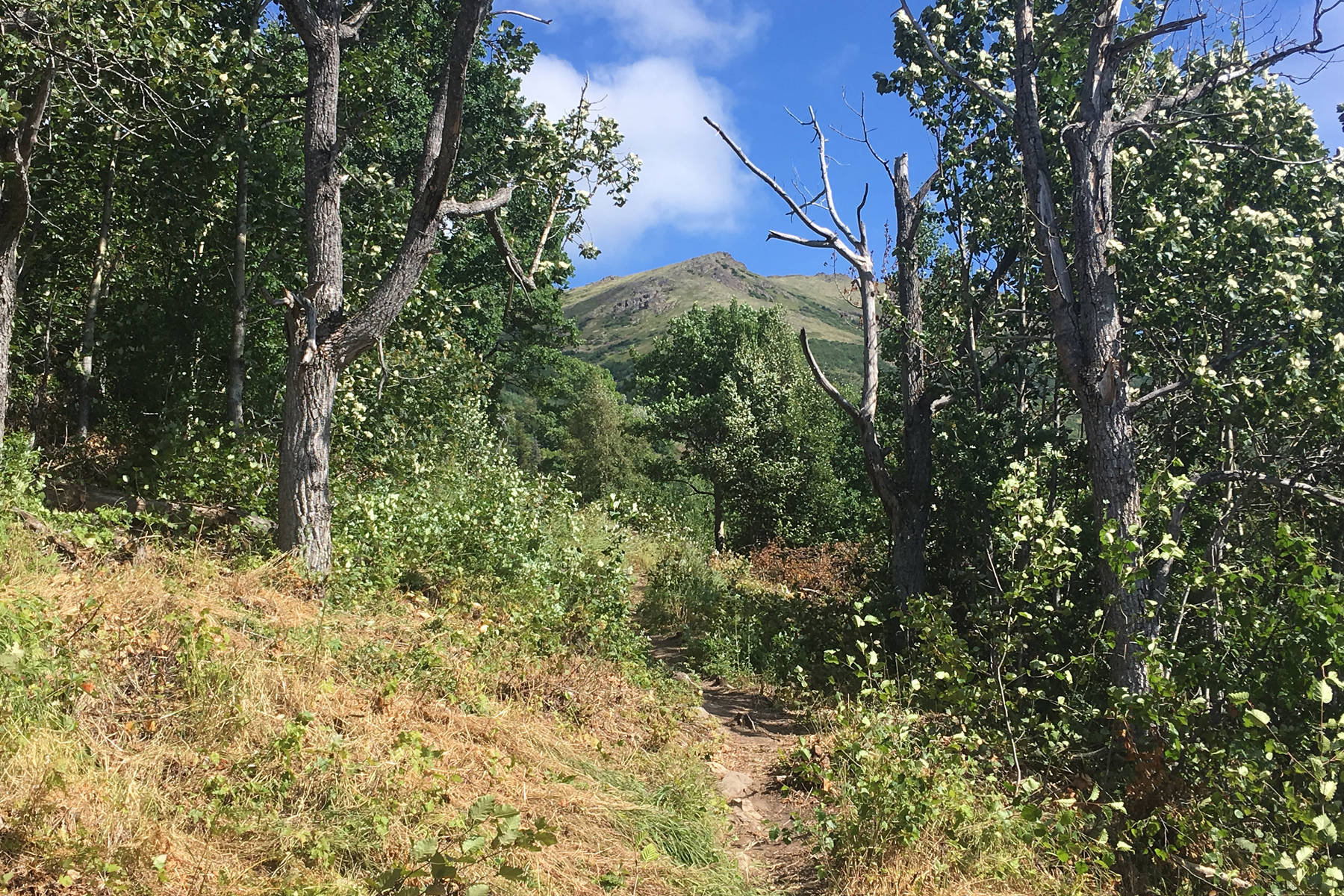Now that the Swan Lake Fire is slowly fizzling out, the majority of mountain trails and wilderness areas are back open for hikers, bikers and adventurers to enjoy.
But which ones are ready to explore again? And which ones are still in need of a brush clearing?
Leah Eskelin at the Kenai National Wildlife Refuge said nearly everything is open, but some trails are still overgrown due to the lengthy closures stemming from the fire, which kept maintenance crews off the trails as well.
Among those areas that are closed are the Mystery Creek Road that winds its way north from the Sterling Highway at the foothills of the Kenai Mountains. Eskelin said the road would have been closing soon anyway but the fire expedited the process. Eskelin said the Big Indian and Trapper Joe public use cabins are also unavailable for the rest of the season.
The popular Skyline, Fuller Lake trails and Seven Lakes trail head have also been opened, with Skyline sporting a considerably look after fire crews cleared significant brush from sections of the uphill trail.
Eskelin said fire crews during the wildfire used Skyline as a contingency line, essentially a third option for crews to take in fighting the spread of the flames, and clearing out ample space along the trail provided the opportunity for quick access in preventative scenarios.
“We had natural fire in some areas of landscape that hadn’t seen wildfire in around 2,000 years,” Eskelin said about the Mystery Hills landscape. “You don’t see fires in upper tundra areas. At that elevation, if you look at the historical fire record, it’s been 70 years ago that we had our last fire.”
According to a Kenai National Wildlife Refuge map, the last major fire in the Mystery Hills unit came in 1947, with previous fires also occurring in 1849, 1834 and 1762.
While Skyline was brushed out as a contingency plan, Fuller Lakes was left alone, meaning the trail up to the two lakes became overgrown with no foot traffic, but Eskelin said the trail should be cleared soon.
Eskelin also said that a burgeoning species of grass, Calamagrostis canadensis (also known as bluejoint grass) has continued a recent trend of overcrowding trails, adding to the problem. Bluejoint grass is a native grass that typically doesn’t grow well in wet climate, but with hotter, dryer summers that the Kenai Peninsula has experienced, the grass has bloomed across the mountains and has smothered popular trails in recent years.
“A lot of places are usually too wet to carry that grass, but with the long-term climatic change, some trails have grown spots where we don’t typically have that type of brush,” she said.
Eskelin also stressed that while the Swan Lake Fire has mostly subsided and the campfire restriction is lifted, the wildfire threat is still high.
“Whenever someone is breaking a sweat sitting still, we’re still at risk,” Eskelin said. “There still needs to be an awareness. Campfires need to be cold to the touch.”
The trend of uncharacteristic heat this summer recently returned after a much-needed break in late July, which saw rainfall and cooler temps prevail for several days. With warm weather and dry conditions sticking around, Eskelin emphasized that campfires must be contained in established rings.
Another danger to watch out for are ash pits, Eskelin said, which are seemingly innocuous spots of ash that may look cold to the casual observer, but are still red hot under the surface. Eskelin said with the proximity of the Swan Lake Fire to the highway system and the accessibility to burned out forest, hikers must avoid crossing through charred remains of burned trees.

